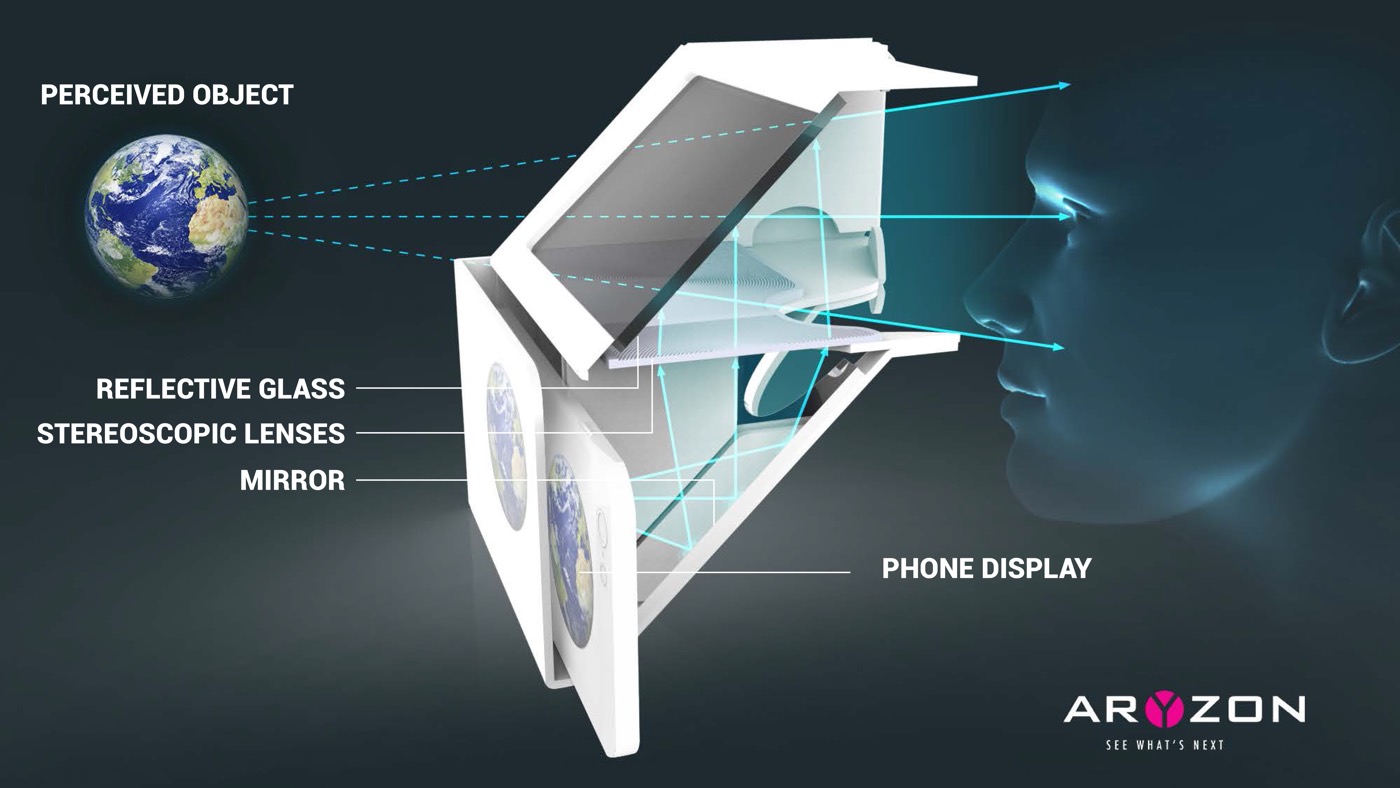Inexpensive Kit Offers Augmented Reality Alternative to High-End Headsets

Augmented reality lies at two extremes. On the one side are wearable headsets like Microsoft's HoloLens, which costs between $3,000 and $5,000, and mixes virtual reality with augmented reality for a holographic experience. On the other side are free apps, like Pokémon Go, which use software and your phone's camera to overlay graphics like cartoon characters onto the natural world.
Now a $30 augmented-reality kit called the Aryzon could fill the gap between exquisite, 3D experiences and cute, 2D games of chase. Like Google's Cardboard for virtual reality, the Aryzon is made from cardboard, ships flat, and can be assembled in minutes. It was developed by a team of five industrial design students from the University of Twente in the Netherlands who were not satisfied with the cost of high-end AR, nor the cheaper experiences available for phones.
"Augmented reality existed, but for your smartphone it was still a 2D experience," Alexander Ceha, the startup's CFO, said.
This week, Aryzon launched a Kickstarter campaign and has already surpassed its fundraising goal of $28,116, with 31 more days to go.
According to Ceha, the Aryzon could appeal to educators, healthcare workers, product marketers, game designers, and engineers who use computer-aided design (CAD). The team plans to make the Aryzon's software and design available through an open source platform, so that anyone can improve upon it.
"We don't have a patent on the design," Ceha said. "We want everyone to help us make it better, make a better experience."
In its current stage of development, the Aryzon comes flat-packed in a box about 13-by-7 inches. Inside are several components, including the cardboard frame for the goggles, a mirror, stereoscopic fresnel lenses, and a combiner glass. An accompanying app explains how to assemble the headset and also gives access to different games and experiences.
Get the world’s most fascinating discoveries delivered straight to your inbox.
RELATED: The Mind-Bending Qualities of VR Might Also Be Used to Heal
A disc, called a target image, that comes with the device serves as a surface to view the AR images. But any object can serve as a target image, including a dollar bill or a computer tablet. It just has to be programmed into the app. The target image is important because some smartphones don't have a built-in gyroscope to track the phone's — and therefore the user's —movement in relationship to the image.
"We didn't want to cut off a whole bunch of smartphone users," Ceha said.
Using Aryzon is pretty straightforward. After choosing from a list of viewing options in the app, the person puts the phone in the slot at the front of the headset with the screen facing in. The software in the app works with the phone's camera to locate the target disc out in front. Meanwhile, the phone displays the augmented reality videos or pictures toward the inside of the goggles. The images get reflected by the mirror into the lenses, where they're split and recombined into a stereoscopic view that produces the illusion of 3D objects on the disc.
Users have the option of viewing content from the app or uploading their own 3D images, such as CAD models. To interact with 3D objects, a user presses virtual buttons, which are essentially predefined regions on the target image, but the team is exploring adding hand gestures too.
RELATED: MindMaze's Neural VR Interface Reads Your Mind to Reflect Your Facial Expression
Ceha said the current version of the Aryzon will ship without a head strap, but they plan to include one with the next version.
"We think it would be a nice addition. This headband will be designed to be fully removable if users do not want to use it," said Ceha.
Although the Aryzon is not trying to compete directly with high-end AR headsets like the HoloLens, Ceha said he likes the comparisons.
"We are only charging around 1 percent of what the developer's kit costs for the HoloLens," he said. It also has a larger field-of-view than the HoloLens and is more accessible for software developers, since the programs Aryzon uses are ones that developers already know.
"Nothing new needs to be learned in order to develop an app that works with the Aryzon," Ceha said.
Originally published on Seeker.

 Live Science Plus
Live Science Plus






